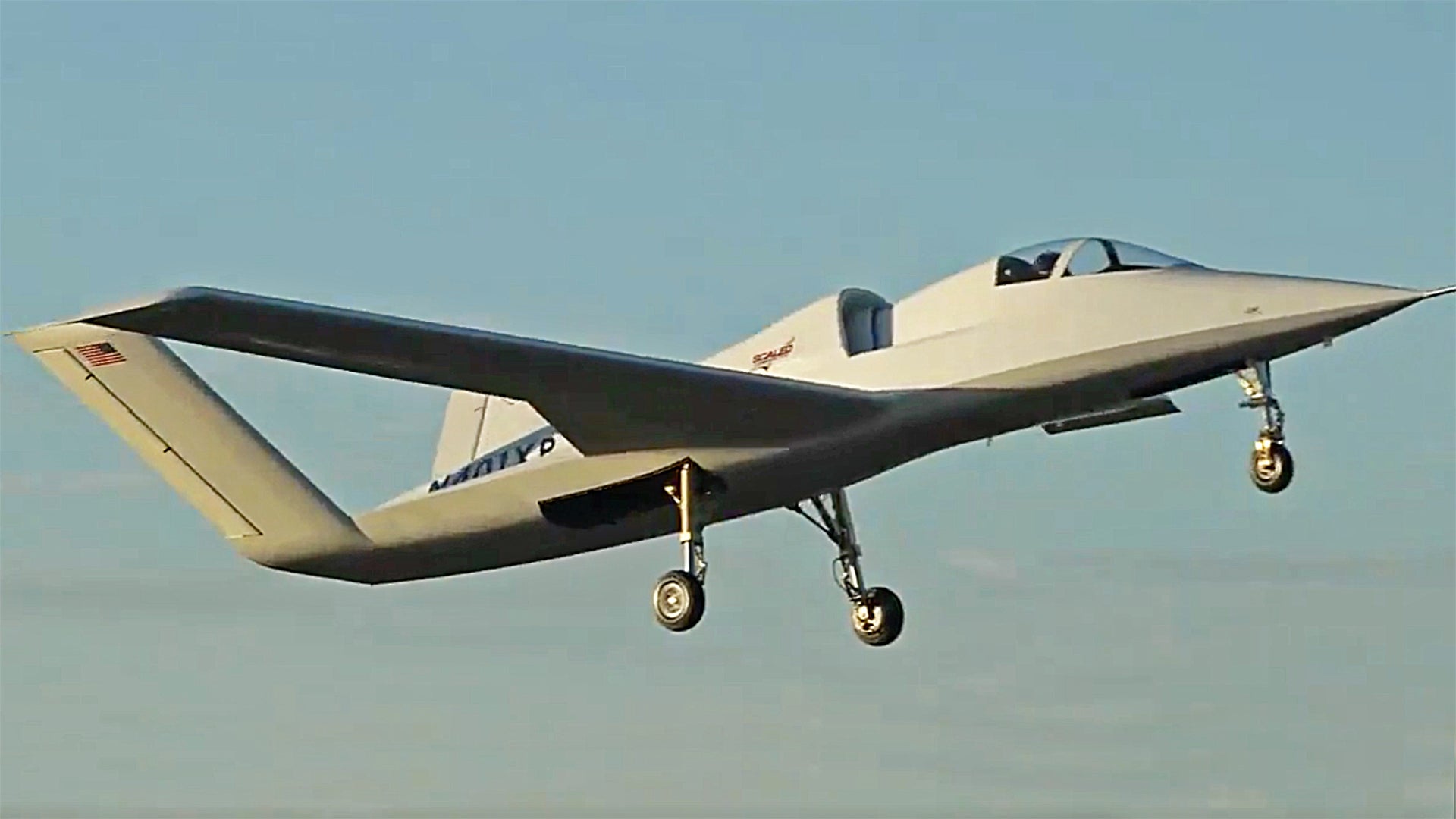Yesterday we reported on the first photograph of legendary aircraft design house Scaled Composites’ new test platform dubbed the “Model 401.” We only had a top-down aspect shot of the aircraft that clearly sports some stealthy features, but now the company has released video of its Model 401 taking to the air and landing for the very first time.
There is much speculation as to who this aircraft, and its supposed twin, were built for as their intended owner wasn’t disclosed in yesterday’s press release. As we previously noted, the jet looks very similar to General Atomics’ Predator C/Avenger unmanned air combat vehicle, and we speculated it could be a manned sub-scale demonstrator for a program associated with the Avenger.
We also noted it could alternatively be a generic platform built to simulate low observable medium altitude, medium endurance unmanned aircraft and their capabilities. Similar manned surrogates that replicate the performance of known unmanned types have been used to test new systems and for training purposes. The fact that unmanned air vehicles can’t fly in much of the country’s airspace means using these manned surrogates in their place is a necessary tactic.
One of our readers also noticed something that could be of importance, in an email they wrote:
“Hi Tyler I enjoyed your article on the Model 401 but thought the press release wording about two vehicles being “identical in outer mold line” was hinting at something.
I found that serial number 001 is registered as N401XD & 002 is registered as N401XP.
“P” for piloted and “D” for drone perhaps?”

The theory is highly speculative but maybe there is something to it. Having one aircraft be manned and a near identical copy be unmanned, with a fairing replacing the canopy and covering the cockpit, and avionics and a satellite communications systems taking the cockpit’s place, would allow for manned and unmanned tests of equipment on a common platform.
Once again, such a concept would also allow for these tests to occur over areas that currently do not allow unpiloted aircraft operations. This would not only be advantageous for getting new systems fielded faster but it would also provide a control variable for testing manned versus unmanned capabilities against each other.
We have reached out to Scaled Composites for more information and photos, we’ll let you know when we find out more about this awesome aircraft.
Contact the author: Tyler@thedrive.com
